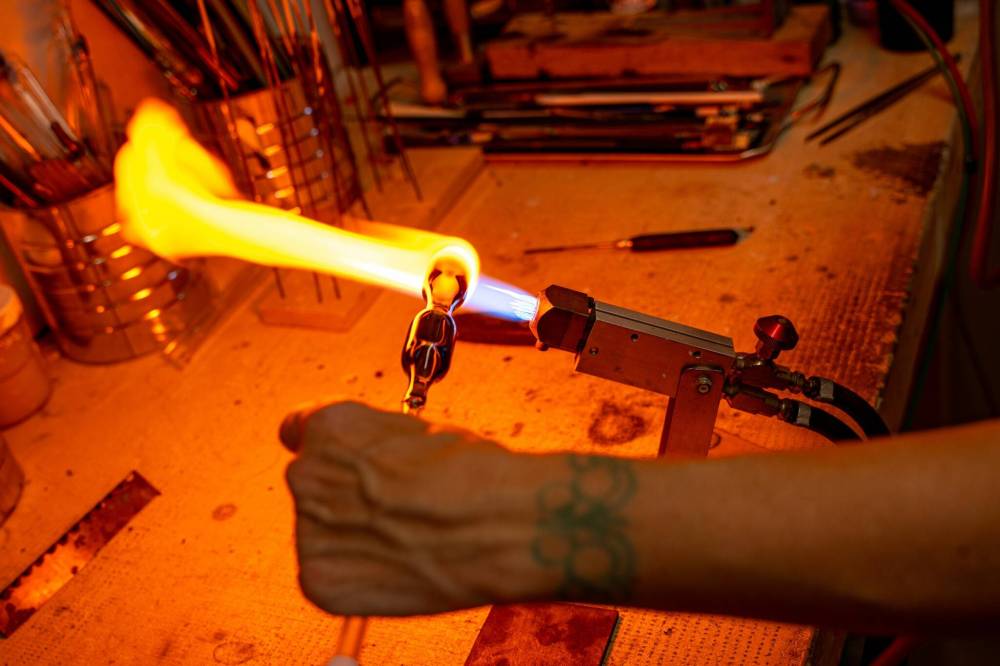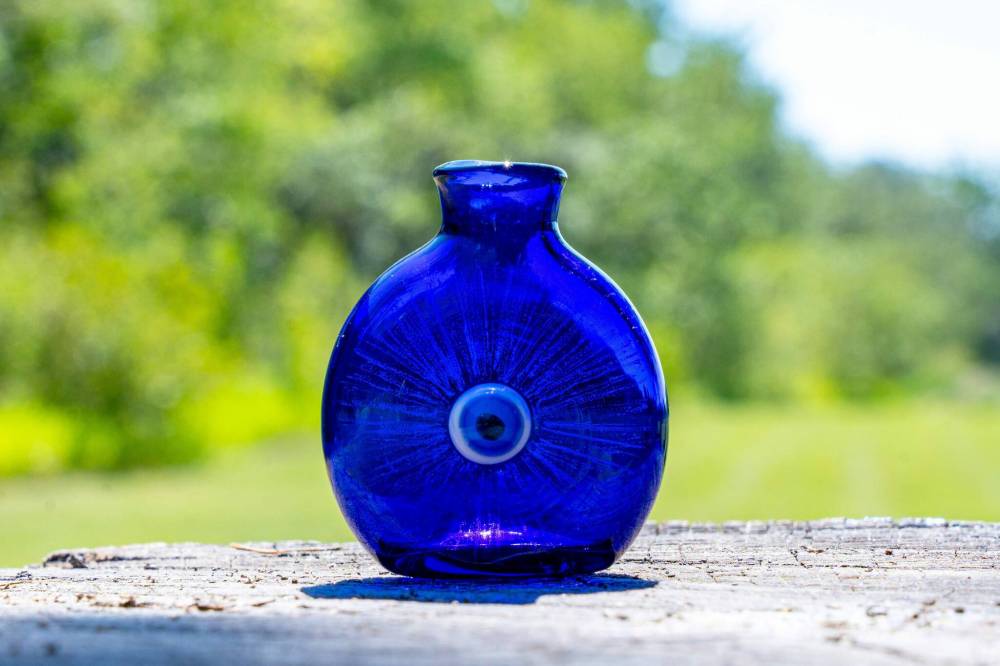Passion for glass Artist Brook Drabot enthralled by fragile medium for a quarter-century
Read this article for free:
or
Already have an account? Log in here »
To continue reading, please subscribe:
Monthly Digital Subscription
$1 per week for 24 weeks*
- Enjoy unlimited reading on winnipegfreepress.com
- Read the E-Edition, our digital replica newspaper
- Access News Break, our award-winning app
- Play interactive puzzles
*Billed as $4.00 plus GST every four weeks. After 24 weeks, price increases to the regular rate of $19.00 plus GST every four weeks. Offer available to new and qualified returning subscribers only. Cancel any time.
Monthly Digital Subscription
$4.75/week*
- Enjoy unlimited reading on winnipegfreepress.com
- Read the E-Edition, our digital replica newspaper
- Access News Break, our award-winning app
- Play interactive puzzles
*Billed as $19 plus GST every four weeks. Cancel any time.
To continue reading, please subscribe:
Add Free Press access to your Brandon Sun subscription for only an additional
$1 for the first 4 weeks*
*Your next subscription payment will increase by $1.00 and you will be charged $16.99 plus GST for four weeks. After four weeks, your payment will increase to $23.99 plus GST every four weeks.
Read unlimited articles for free today:
or
Already have an account? Log in here »
Hey there, time traveller!
This article was published 07/09/2024 (412 days ago), so information in it may no longer be current.
Blowing steadily, her brow furrowed in concentration, Brook Drabot’s eyes widen as the fragile glass rod softens under the heat of her blowtorch, morphing into a perfect bubble with every gentle exhalation.
The artist has done this exact thing countless times in her 25 years working with glass but her fascination with the process has yet to wane.
Drabot’s love affair with the amorphous solid can be traced to her high school days when she began studying ceramics. That interest led her to Sheridan College in Oakville, Ont., where she enrolled in their craft program, majoring in glass-making.
Glass worker Brook Drabot in her garage studio. (Nic Adams / Free Press)
Returning to Manitoba in her early 20s, Drabot apprenticed with scientific glass worker Ryan Lacovetsky for four years to widen her knowledge and refine her methods.
Glass rods in Brook Drabot’s studio. (Nic Adams / Free Press)
“There are lots of ways to work with glass,” she says. “My style is scientific glass blowing; it’s different from working from a furnace because I don’t keep all my glass melted at once. If you were to work from a furnace you would melt a whole batch of glass and have to use all of it until the furnace is empty.”
Drabot’s methods allow her to work from home and in shorter periods of time. Her glass rods — she uses clear as well as coloured ones — from U.S.-based scientific-glass supplier Mountain Glass are cut using oxygen and propane blowtorches.
Working swiftly, she manipulates the fragile rods, softening them in the flames before she can begin blowing.
Glass artist Brook Drabot first softens glass rods with a blowtorch before blowing the glass into tiny vases, miniature ornaments and small bowls. (Nic Adams / Free Press)
Glass worker Brook Drabot blowing glass in her studio. (Nic Adams / Free Press)
As the glass becomes molten Drabot blows through a piece of rubber hose to form a bubble for the body of her vase.
It’s a laborious process and requires her full concentration as she works to create the neck of the vase from the same piece of glass.
“I like getting the shape right. Every time I see I have a round bubble is so gratifying. I like knowing that I know how to do what I need to do with my hands, that I got the timing right and that it worked out in the way it was supposed to,” she shares.
With a melting temperature of around 1,650 C (3,000 F) scientific or borosilicate glass is an extremely hard material that can be heated and cooled very quickly, Drabot explains.
Glass worker Brook Drabot blowing glass in her studio. (Nic Adams / Free Press)
Brook Drabot blowing glass in her studio. (Nic Adams / Free Press)
In order for the glass not to crack it has to be annealed in a special kiln, which slowly cools the piece from melting point to room temperature to reinforce its strength.
As well as making miniature vases, the artist is repurposing glass from past projects to create glass garlands in the style of decorative Polish Pajaki chandeliers.
Drabot dresses up her windowsills with handblown glass bud vases. (Supplied)
“Right now I am also using leftover bits of glass tubing, connecting them into a geometric form to put together a 3D diamond shape, which I can hopefully light from the inside. This lighting project is something I have wanted to do forever and it will be like neon tubing except that I am using LED lights instead of gases to illuminate the rods,” she says.
The reflective nature of glass and its ability to shift from solid to liquid and back to solid continues to enthrall the artist, fuelling her passion for the medium
“Glass starts off one way and then I can melt it and form it while it’s still soft. And when it hardens again it still retains the shape of its softness. It is very gratifying. It’s taken a lot of practice to get it right and yes, it’s doing the same thing over and over again, but it always feels good when I get it just how I want it,” she says.
av.kitching@freepress.mb.ca

One of glass worker Brook Drabot’s creations. (Nic Adams / Free Press)

One of glass worker Brook Drabot’s creations. (Nic Adams / Free Press)

One of glass worker Brook Drabot’s creations. (Nic Adams / Free Press)

Some of glass worker Brook Drabot’s creations. (Nic Adams / Free Press)

AV Kitching is an arts and life writer at the Free Press. She has been a journalist for more than two decades and has worked across three continents writing about people, travel, food, and fashion. Read more about AV.
Every piece of reporting AV produces is reviewed by an editing team before it is posted online or published in print — part of the Free Press‘s tradition, since 1872, of producing reliable independent journalism. Read more about Free Press’s history and mandate, and learn how our newsroom operates.
Our newsroom depends on a growing audience of readers to power our journalism. If you are not a paid reader, please consider becoming a subscriber.
Our newsroom depends on its audience of readers to power our journalism. Thank you for your support.
